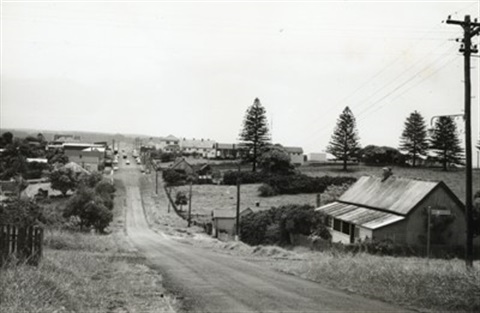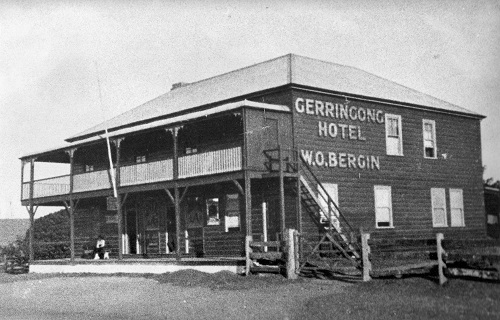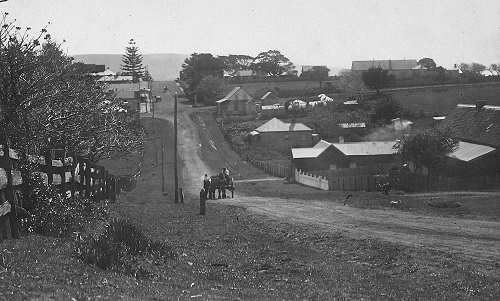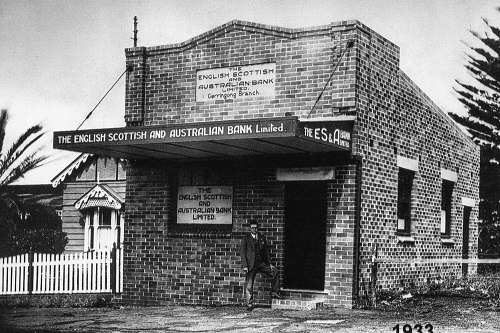History of Gerringong

The official spelling of Gerringong was established in 1857 with the development of a town centre that included a post office, Sharwood’s blacksmith, Beale’s cooperage, Ransome’s butcher shop, a slaughter house operated by T Dixon and The Gerringong Arms with William Lang as licencee. The Boat Harbour Store, built by George Fuller, was established earlier than the main part of town, and was the hub for the shipping that was conducted out of the harbour.
The first land grant was issued to William Smith in 1821. This land was later sold to Robert Miller who established 'Renfrew Park'. The other large estates in the area were 'Omega Retreat' sold to James Grey by Thomas Campbell and Alne Bank granted to Michael Hindmarsh. Other land grants at the time were to McBrian, Richardson, Hyndes and Bland (these were later acquired by Alexander Berry of "Coolangatta"). Much of the Gerringong land south of the township was encompassed in the Coolangatta estate. Subdivision and acquisition of this part of the estate occurred during the late 1800’s, so the pioneering tenants were able to buy the land and stay on their farms.
Most early families in the area were on the clearing lease system (as the free land grants ceased by 1831) where they were expected to clear the land for farming within five years. John Sharpe built the Bush Bank Steam Flour Mill in 1856, however many of these small farmers ground their own grains in the early years to supplement their simple diets of game, pork and porridge with bread baked in the camp oven and home grown vegetables.
Kiama Council was established in 1859, incorporating Gerringong, but the residents of Gerringong felt council money was unfairly used and sought to establish their own municipality. The first meeting of the Gerringong Municipal District was at the Lanterrick Hotel in 1871 and the first mayor was M.E. Robson. Gerringong Council amalgamated with Kiama Council in 1954.
The first Nations meaning of Gerringong is said to be ‘fearful place’ or ‘place of peril’ and this was certainly the case for the residents of the newly built Lanterrick Hotel when it was struck by lightening in 1861. Five windows were destroyed, smashed glass was everywhere, weatherboards were torn off the outside of the building and internal doors were splintered sending dangerous timber flying inside. Eleven years later the Lanterrick Hotel was completely destroyed by the fire that destroyed a significant proportion of the towns buildings.

Fern St, Gerringong looking north c.1915.

E.S & A Bank, Gerringong c.1933
